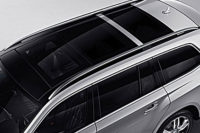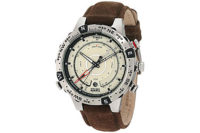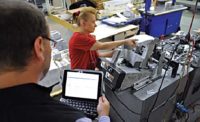Last year’s California wildfire season was a record-setting one for the state. By the end of 2020, more than 9,600 fires had burned nearly 4.4 million acres, or more than 4 percent of the state’s roughly 100 million acres of land. These numbers make 2020 the largest wildfire season recorded in California’s modern history, according to the California Department of Forestry and Fire Protection.
Overcoming the wildfires required many military planes, U.S. troops and firefighters from more than 10 states. Among the key tools used by the firefighters were portable fire pumps and various types of water-handling equipment, such as foam generators, water hoses and tanks.
Waterax Corp. is one of the world’s largest manufacturers of portable fire pumps and water-handling equipment. Established in 1898, Waterax has plants in Montreal, Canada, and Vancouver, WA. Products are manufactured at both locations, and built durable enough for demanding environments.
Several years ago, managers at the Montreal facility were required to implement a new floor layout due to an impending move. They also decided to implement lean manufacturing and a new material handling system to improve assembler ergonomics and increase manufacturing efficiency.
The lean manufacturing program was completed by all plant-floor workers in several training sessions. The material handling system consists of a conveyor, a parts-bin-equipped workstation where performance tests are carried out, and various modular structures—all of which were built in-house using a pipe-and-joint system from Flexpipe Inc.
As the primary component for material handling, the conveyor regulates production to reduce the risk of employees getting hurt. It was designed and built by the production engineer. The workstation was assembled by several workers, who paid close attention to workstation height to ensure worker safety.
The main components of the Flexpipe system are 28 millimeter-diameter pipes (with plastic coatings) and metal joints (electroplated black or nickel-plated silver). Various fasteners (M6 and M8 bolts and nuts, and Torx-, countersunk- and square-head screws) are used during assembly. The fasteners are installed with a 5-millimeter Allen wrench or drill bit.
Other structural components include a wide range of conveyor roller tracks, deckings and casters. Many accessories are available, such as leveling shims, pipe extensions, Y-shaped supports, hooks, drawer slides and tow bars.
Another company benefitting from the Flexpipe system is racing-wheel manufacturer HRE Performance Wheels, based in Vista, CA. In 2015, HRE met with Flexpipe to discuss its need for a system that keeps inner and outer rim sections of a four-wheel set near each other during production, which lasts an average of 13 hours. HRE workers and production managers had been spending a lot of time loading and unloading the sections to pallets, carts and shelving, or searching for sections on the shop floor.
Using the Flexpipe system, HRE developed a prototype black-pipe kitting cart on which perfectly fit a four-wheel set (with specific order number). Each order number had its own cart, creating a one-piece flow effect in the factory. The work order followed the flow cart on a simple hook that could not be removed. Rush order sets were handled on red carts, and return goods authorization orders on blue carts.
Other users of the Flexpipe system include aerospace, automotive, white goods and medical-device manufacturers. System sales are split between customers who buy components and build their own structures, and those who have Flexpipe preassemble the structures. For more information, call 855-406-0253 or visit www.flexpipeinc.com.





